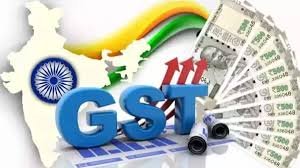GST Collection on Health and Life Insurance Sees a Significant Surge
The Goods and Services Tax (GST) collection from the health and life insurance sector has witnessed a remarkable rise, reflecting a growing demand for insurance products and increased financial inclusion. This development highlights the sector’s pivotal role in India’s economy and its importance for individuals seeking financial security.
Overview of GST Collection in the Insurance Sector
The GST revenue from the health and life insurance sectors has shown a significant surge compared to previous years. This increase is attributed to the rising adoption of insurance policies by individuals and businesses alike. Enhanced awareness about the importance of financial and health coverage post-pandemic has played a key role in boosting policy enrollments. Additionally, government schemes promoting insurance accessibility have further fueled this growth.
Reasons for the Growth in GST Revenue
The increased GST revenue from insurance policies aligns with growing public awareness of the need for financial preparedness in the face of uncertainties. Health insurance, particularly, saw a surge in subscriptions due to pandemic-induced concerns. Life insurance policies have also gained traction, especially among the working-class population, as they aim to secure their families’ future.
Impact of the GST Surge on the Economy
The rise in GST collections contributes positively to the government’s revenue stream, enabling better allocation of funds toward public welfare initiatives. It also signifies a maturing insurance market, where more individuals are proactively participating in securing their health and financial future.
Future Prospects for GST Collection in Insurance
With the government continuing to push financial inclusion through schemes like Ayushman Bharat and PM Jeevan Jyoti Bima Yojana, GST revenue from insurance is expected to climb further. The integration of technology in the insurance sector is likely to streamline processes, enhance accessibility, and drive further growth in the coming years.
Why This News Is Important
Boost to Financial Inclusion and Awareness
The surge in GST collections from health and life insurance indicates an increased awareness about financial preparedness among Indians. This development reflects a shift toward prioritizing financial security and health coverage, which is vital in a post-pandemic world.
Support for Government Schemes
Higher GST revenue empowers the government to sustain and expand welfare schemes aimed at improving public health and financial stability. Insurance accessibility is critical for achieving economic growth and addressing socio-economic inequalities.
Economic Growth Indicator
The growing GST collection demonstrates a robust and expanding insurance market, which indirectly contributes to the overall economic health of the country. It also hints at better consumer spending and trust in the insurance industry.
Historical Context
Insurance as a financial product has a long history in India, with roots tracing back to the establishment of Life Insurance Corporation (LIC) in 1956. The introduction of GST in 2017 simplified the taxation system, making it easier for insurers to manage compliance. However, the sector saw a slow start under the GST regime due to the lack of awareness among the masses. The COVID-19 pandemic became a turning point, underscoring the importance of insurance in ensuring financial stability during health crises. Post-pandemic, the government’s push toward digitalization and inclusivity has further catalyzed the sector’s growth.
Key Takeaways from the GST Collection Surge in Health and Life Insurance
| S. No. | Key Takeaway |
|---|---|
| 1 | GST collection from health and life insurance has seen a significant increase. |
| 2 | Increased awareness and adoption of insurance policies post-pandemic are key drivers. |
| 3 | Government schemes like Ayushman Bharat and PM Jeevan Jyoti Bima Yojana support insurance accessibility. |
| 4 | Rising GST revenues reflect a maturing insurance market in India. |
| 5 | Enhanced GST revenues contribute to public welfare initiatives and economic growth. |
Important FAQs for Students from this News
What is GST collection on health and life insurance?
GST collection on health and life insurance refers to the revenue generated by the government from the Goods and Services Tax (GST) levied on insurance premiums paid for health and life insurance policies. This collection has seen an increase in recent years due to a rise in insurance uptake.
What caused the surge in GST revenue from insurance?
The surge in GST revenue from the insurance sector is primarily due to the growing awareness of the importance of health and life insurance, particularly post-pandemic. Additionally, government initiatives like Ayushman Bharat and PM Jeevan Jyoti Bima Yojana have contributed to this growth.
How does this increase in GST collection impact the Indian economy?
The increased GST collection from health and life insurance policies helps boost government revenue, which can be used for welfare schemes and economic growth. It also signifies a growing insurance market, indicating financial stability and increasing consumer participation in securing their health and future.
What is the significance of government schemes like Ayushman Bharat and PM Jeevan Jyoti Bima Yojana in this context?
Government schemes such as Ayushman Bharat and PM Jeevan Jyoti Bima Yojana play a crucial role in promoting insurance accessibility and financial inclusion. They aim to provide affordable health and life insurance coverage to the masses, which has directly impacted the growth of the insurance sector and GST revenue.
What are the future prospects of GST collection from the insurance sector?
The future prospects of GST collection from the insurance sector look promising due to continued government focus on financial inclusion, digitalization in the insurance industry, and public awareness about the importance of insurance policies for health and financial security.

